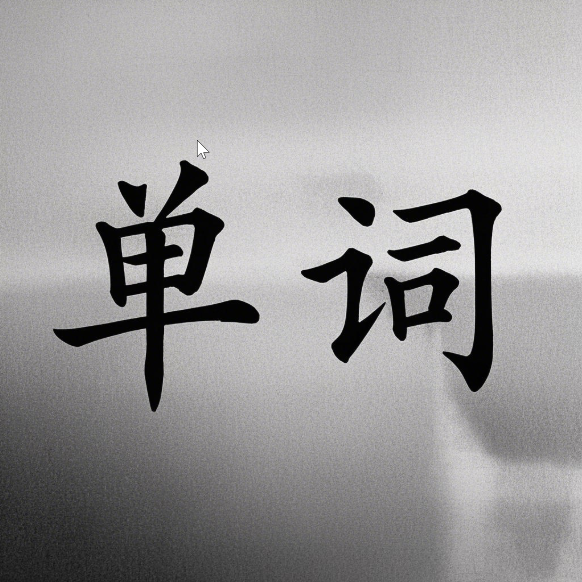chieftaincy
简明释义
n. 酋长或首领的地位或职位
英英释义
The position or rank of a chieftain; the office or authority of a leader of a tribe or clan. | 酋长的地位或等级;部落或家族首领的职务或权威。 |
单词用法
传统酋长制 | |
酋长权争议 | |
酋长制系统 | |
继承的酋长身份 | |
酋长头衔 | |
酋长理事会 |
同义词
反义词
| 无政府状态 | The country fell into anarchy after the leader was overthrown. | 在领导者被推翻后,该国陷入了无政府状态。 | |
| 混乱 | The sudden chaos in the city made it difficult for the authorities to maintain order. | 城市的突然混乱使当局难以维持秩序。 |
例句
1.Mandla Mandela holds a traditional chieftaincy of Mvezo. It was Nelson Mandela's birthplace and Mandla's constructing a heritage center there.
纳尔逊·曼德拉是姆维佐村传统上的酋长,这里是他的出生地,曼德拉的遗产中心也在这里。
2.Mandla Mandela holds a traditional chieftaincy of Mvezo. It was Nelson Mandela's birthplace and Mandla's constructing a heritage center there.
纳尔逊·曼德拉是姆维佐村传统上的酋长,这里是他的出生地,曼德拉的遗产中心也在这里。
3.Disputes over the chieftaincy can lead to conflicts within the community.
对酋长制的争议可能导致社区内部的冲突。
4.Historically, the chieftaincy was often associated with land ownership and military power.
历史上,酋长制通常与土地所有权和军事力量相关联。
5.The chieftaincy of the local tribe has been passed down through generations.
当地部落的酋长制已经代代相传。
6.In many cultures, the chieftaincy plays a crucial role in governance and community decisions.
在许多文化中,酋长制在治理和社区决策中发挥着至关重要的作用。
7.The young prince is preparing to assume the responsibilities of the chieftaincy after his father's retirement.
年轻的王子正在准备在父亲退休后承担酋长制的责任。
作文
The concept of chieftaincy refers to the leadership role held by a chieftain, particularly in tribal or indigenous societies. This form of governance is often characterized by a strong connection to cultural traditions and a deep-rooted sense of community. In many societies around the world, chieftaincy represents more than just a title; it embodies the responsibilities and duties of a leader to their people. Chieftains are typically seen as the custodians of their community’s values, customs, and heritage.In regions such as Africa, the Pacific Islands, and parts of Asia, chieftaincy plays a crucial role in maintaining social order and governance. Chieftains are often elected based on lineage or through community consensus, and they wield significant influence over local affairs. Their authority is not solely derived from their position but also from their ability to connect with the community, mediate disputes, and ensure the well-being of their people.One of the key aspects of chieftaincy is the emphasis on communal decision-making. Unlike modern democratic systems that may prioritize individual rights, traditional chieftaincy often focuses on collective welfare. The chieftain acts as a mediator, balancing the needs of various factions within the community to achieve harmony. This approach can foster a sense of belonging and unity among community members, as decisions are made with the input and consensus of the group.However, the role of chieftaincy is not without its challenges. In contemporary society, many traditional chieftains face pressures from modernization and globalization. As communities evolve, the relevance of traditional leadership structures can be questioned. Some argue that chieftains may struggle to maintain their authority when confronted with new governance models or external influences. This tension can lead to conflicts between traditional values and modern expectations.Moreover, the role of women in chieftaincy has been a topic of debate. Historically, many chieftaincies have been male-dominated, with leadership roles reserved for men. However, there is a growing recognition of the importance of gender inclusivity in leadership. Some communities are beginning to embrace female chieftains, acknowledging their contributions and perspectives. This shift not only empowers women but also enriches the decision-making process within the community.In conclusion, chieftaincy is a multifaceted concept deeply embedded in the cultural fabric of many societies. It encompasses leadership, community cohesion, and the preservation of traditions. While facing modern challenges, traditional chieftains continue to play a vital role in guiding their communities. Understanding the dynamics of chieftaincy is essential for appreciating the complexities of leadership in various cultural contexts. As we move forward, it is crucial to find a balance between respecting traditional governance and adapting to the realities of a changing world. This balance will ultimately determine the future of chieftaincy and its place in contemporary society.
“chieftaincy”这个概念指的是酋长在部落或土著社会中所担任的领导角色。这种治理形式通常以强烈的文化传统联系和深厚的社区意识为特征。在世界许多社会中,chieftaincy不仅仅是一个头衔;它体现了领导者对其人民的责任和义务。酋长通常被视为其社区价值观、习俗和遗产的守护者。在非洲、太平洋岛屿和部分亚洲地区,chieftaincy在维护社会秩序和治理方面发挥着至关重要的作用。酋长通常根据血统或通过社区共识当选,他们对地方事务拥有显著的影响力。他们的权威不仅源于他们的职位,还来自于他们与社区的联系、调解争端的能力以及确保人民福祉的责任。chieftaincy的一个关键方面是强调集体决策。与现代民主制度可能优先考虑个人权利不同,传统的酋长制往往侧重于集体福利。酋长作为调解者,平衡社区内各个派系的需求,以实现和谐。这种方法可以在社区成员之间培养归属感和团结感,因为决策是经过集体的意见和共识做出的。然而,chieftaincy的角色并非没有挑战。在当代社会,许多传统酋长面临现代化和全球化的压力。随着社区的发展,传统领导结构的相关性可能会受到质疑。一些人认为,当面临新治理模式或外部影响时,酋长可能会难以维持其权威。这种紧张关系可能导致传统价值观与现代期望之间的冲突。此外,女性在chieftaincy中的角色也成为了辩论的话题。历史上,许多酋长制一直是男性主导的,领导角色通常保留给男性。然而,越来越多的人认识到性别包容性在领导中的重要性。一些社区开始接受女性酋长,承认她们的贡献和视角。这一转变不仅赋予女性权力,也丰富了社区内的决策过程。总之,chieftaincy是一个多层面的概念,深深植根于许多社会的文化结构中。它涵盖了领导、社区凝聚力和传统的保存。尽管面临现代挑战,传统酋长仍然在引导他们的社区中发挥着至关重要的作用。理解chieftaincy的动态对于欣赏各种文化背景下领导的复杂性至关重要。随着我们向前发展,找到尊重传统治理与适应变化世界现实之间的平衡至关重要。这一平衡最终将决定chieftaincy的未来及其在当代社会中的地位。
